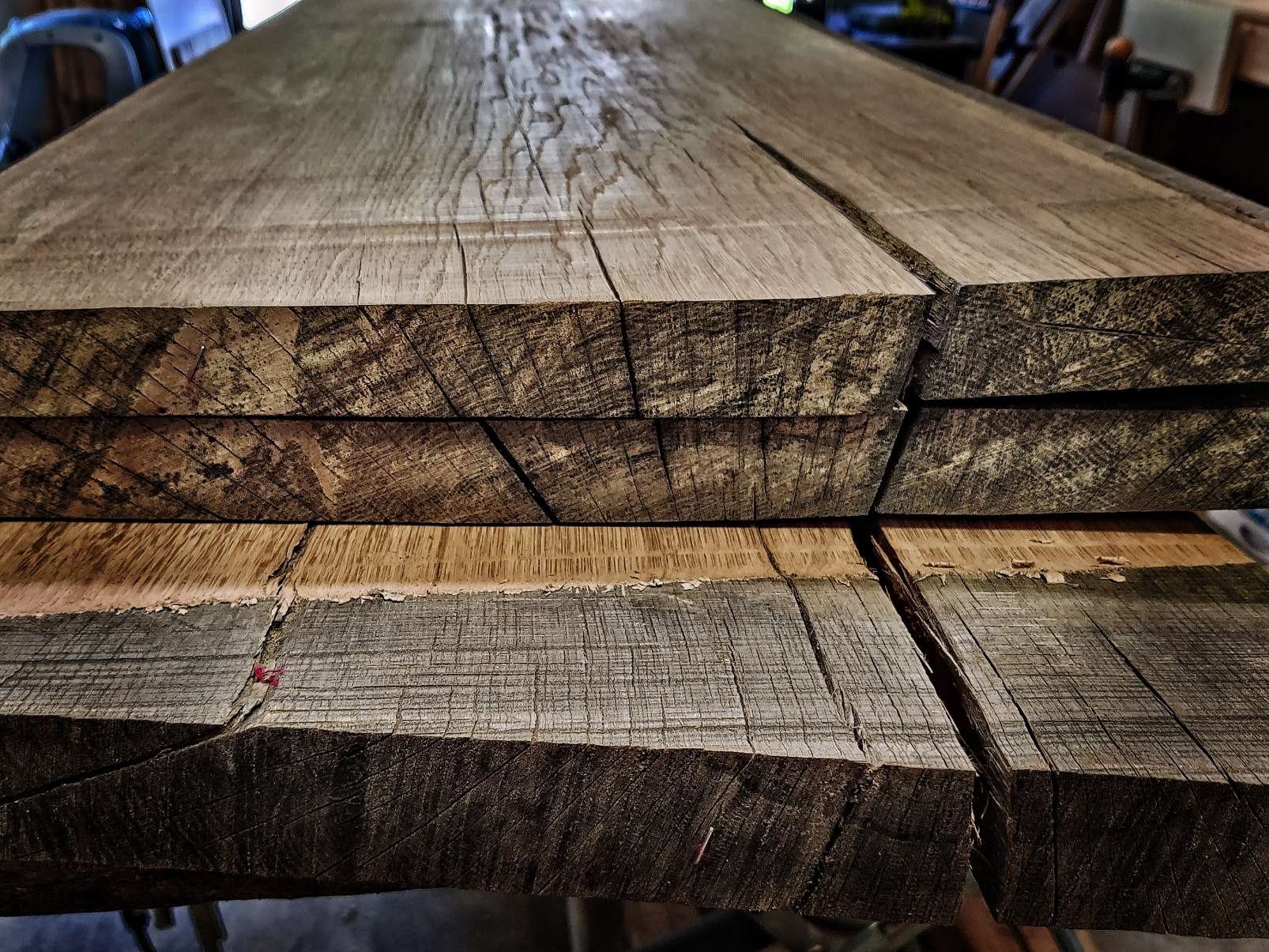Hardwood or Plywood: What is Best for Your Project - Wood Essentials
Hardwood, while great, is not always the best option for your project. Plywood tends to have a bad reputation, but in reality plywood is an amazing material. It’s a wood product, made from real, solid wood, and is stable. That means wood movement is not (as much) of an issue.
Need to know more about plywood? Check out my Plywood Guide article.
Now that you know plywood does not equate to cheap, in some cases it can be more expensive than it’s equivalent amount of solid wood, here’s how you decide which project parts should be plywood and which are better as solid.
Solid Wood
When I say solid I mean a board milled from a tree. Sometimes you’ll see “Solid Wood” furniture out in the market, and it’s not solid wood. I means it’s made of wood, but some of that wood is plywood or veneered MDF. There is nothing wrong with those products, in fact there are some distinct advantages to veneering, but I wouldn’t consider them solid wood as in wood all the way through.
Where to Use Solid Wood
Solid wood is more durable than most engineered or veneered woods used in production furniture. That’s why you’ll often see a combination of engineered and solid wood used in many pieces today, and it all comes down to using wood’s strength.
Real wood is strong and flexible, a necessity in nature to stay upright and bend in strong winds. Wood accomplishes this feat in its cellular structure. It is made up of two main components, cellulose and lignin. Cellulose, the building blocks, are glued together with lignin. That bond does not want to break, it intertwines and is very strong and flexible. Lignin is currently being tested to create flexible, plastic type material for circuit boards, and other commercial uses.
Pretty cool stuff, but to get to the point, use solid wood where you need the strength of the wood, especially in items that will be moved around. Kitchen cabinets don’t move, hence they are made out of plywood, but the doors on those cabinets swing every day and are solid wood for that reason.
Chairs are another example where solid wood is a must. That chair needs to be strong and slightly flexible to bear weight and be drug around the house by a toddler who spied a cookie on the counter and needs a stepping stool. Okay, maybe that’s just how chairs are used in my house.
The general rule is, if it moves, takes abuse, or be in a moist environment then use solid wood. Here are a few more examples.
Cutting boards
Drawer fronts
Cabinet doors
Table and counter tops
Plywood
Plywood, inclusive of MDF, is a veneered substrate. Plywood is layers of wood stacked tangentially and glued together. This orientation with grain going in opposite directions mitigates wood movement. It doesn’t eliminate it, plywood will still expand and contract, but it does reduce it.
MDF is glue and sawdust mixed together and pressed into a sheet. That sheet is either sold as is or is veneered with solid wood.
There are also combination products that use wood layer and MDF layers to increase stability.
Where to use Plywood
Plywood is a great material. It is large and flat, two qualities that make it great for furniture making. You can save yourself a ton of time by using plywood by skipping the normal milling and gluing and re-milling steps you have to take with solid wood.
Plywood’s limited movement makes it a great option for areas where wood movement may cause problems, such as table tops with a border or panels in a frame, such as in a cabinet door.
But it does have its limitations. Plywood edges are not pretty. Therefore your project plan needs to take into account covering them up. One way to do this is by edge banding. You can buy a roll, or make your own out of solid wood. Simply cut thin strips slightly wider than they plywood, apply glue, and tape them in place. Once dry, trim off the excess and you now have a board that looks like solid wood.
The only problem is your board will not have end grain. Hint, this is a great thing to look for in “solid wood” furniture. If all the edges are straight grain you are looking at edge banded plywood.
A Hybrid Approach
All projects could be made completely out of solid wood. But plywood has it’s place. I would not use plywood for an outdoor table but I would make a bookshelf with it. If you think it’s not strong enough then go to your kitchen and look at the shelf supporting your plates. It is a piece of plywood resting on shelf pins. No support, but it holds it well. Do you want to know why? Because it’s a hybrid approach.
Cabinets, and most of the furniture in your house including that dresser you bought from Ikea, are made from a combination of plywood (or particle board) and solid wood. The plywood covers area and solid lends support.
I recommending using a hybrid approach. Sticking with solid wood for edges, feet, bases, tops, and corners. All areas that will take abuse. Then fill in panels with plywood to save you time and effort. That’s exactly what I did when building this cabinet.
But as a furniture maker, solid wood is more fun. It has its quirks. It will move over time, there are flaws and defects to include or work around, and you have to know how the wood works, but that is part of the fun. Understanding how to use the wood to it’s full potential, highlighting it’s character and using it’s strength is the reward you gain from working with solid wood.


